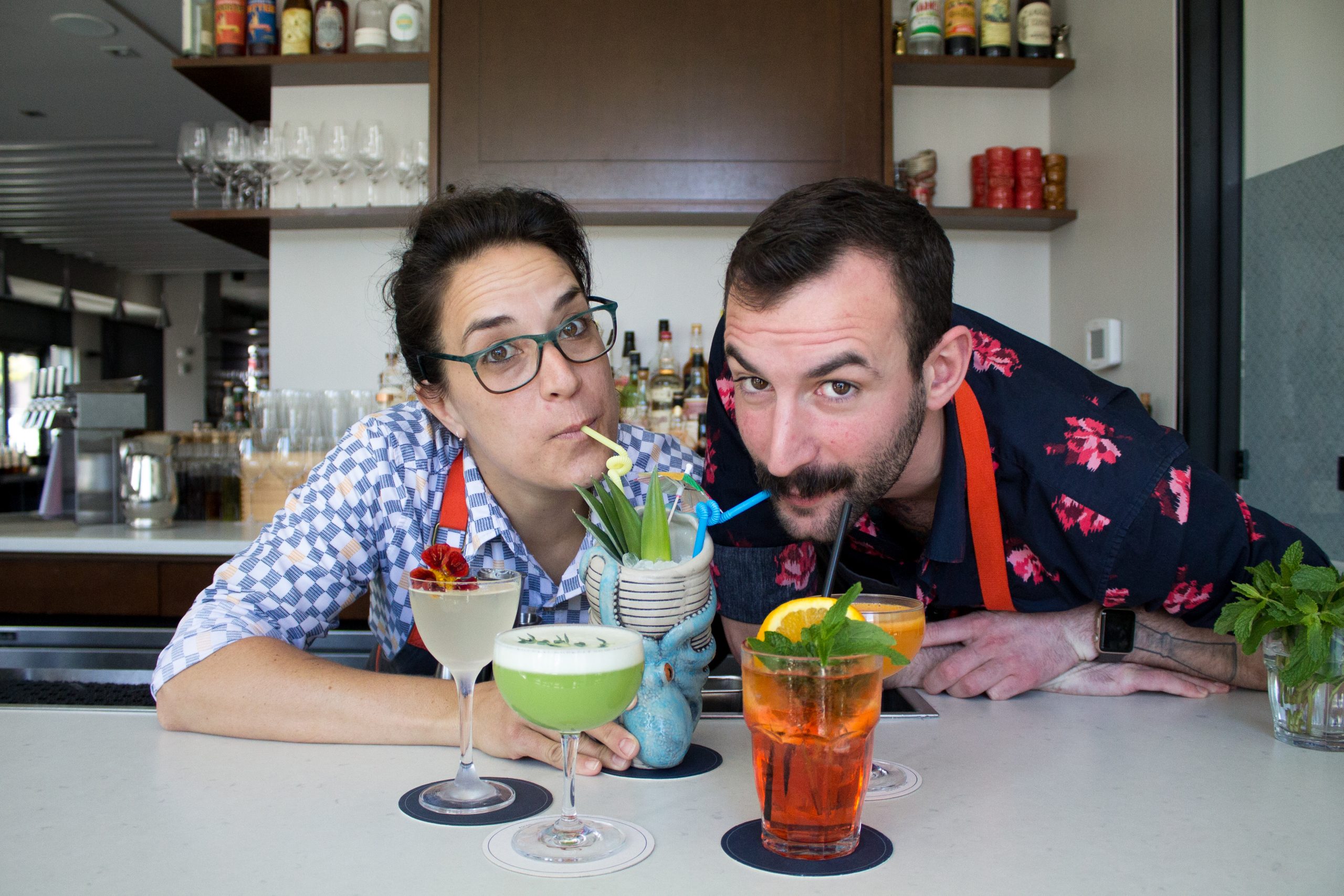


Opening in June of 2016, the beverage program of Bar Mezzana can be epitomized by two unique strings that weave layers of taste and flavor together into a modern tapestry. The history of the program’s creators, beverage director Ryan Lotz and principal bartender Jenna Rycroft, can easily be traced within the core of their beverage program identity. Both come from storied and prestigious Boston cocktail establishments such as Drink and The Hawthorne.
The concept of Bar Mezzana was originally developed by renowned restaurateurs Colin Lynch, Heather Lynch, and Jefferson Macklin. It’s primarily centered around presenting a modern and refined experience of Italian cuisine and culture. Similarly yet separately drawn to this new project, Ryan and Jenna brought their years of service and friendship together at No. 9 Park to help establish a new creative force in the burgeoning Ink Block of Boston’s South End neighborhood.
While developing the latest edition of the Craft Cocktail Book series, we had a chance to chat with both Ryan and Jenna about the genesis of their program and their efforts to continue pushing forward while staying focused on their goals.
The following has been edited for clarity.
At this point, I have a hard time answering that, because it’s such a collaborative process. People will sometimes ask me “Whose cocktail is this?” And I’ll be like “Ah, I don’t know.”
Sometimes it’s cut and dry whose cocktail it is. But, there are a lot of “one person’s idea, then one person’s take on it, then one person’s revision of that take.” It’s a lot of bouncing back and forth, so I agree with Ryan that it’s hard to untangle it. There was a lot of back and forth, trying to make things work.
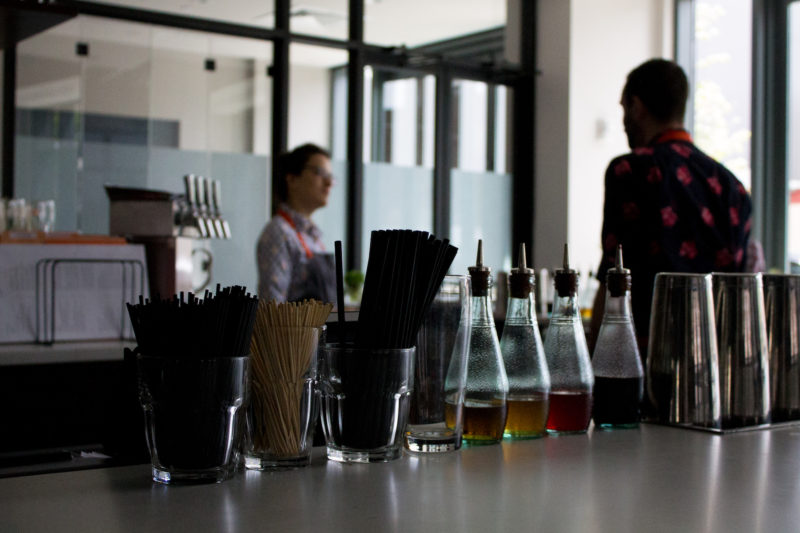
Absolutely. Jenna and I both come from really classic schools of cocktail thought. I was making cocktails at No. 9 Park for just about the past four years, working for Jackson Cannon. Jenna learned a lot working at Drink. Those places make what a lot of people would typically think of as the “craft cocktail.” When we were coming here, we wanted to reinterpret a lot of that and say “Yeah, this is a Martini variation, but it’s our variation on a Martini.”
We wanted to have more of a modern take, but with a lot of Italian ingredients. You’ll see in a lot of our cocktails that we take very simple formats and find ways to incorporate hallmarks of Italian cuisine or culture.
For instance, Italian palates are really tuned to the bitter flavor profile. Amari is such a hot word in the beverage community right now. But, in Italy, it’s really true. It’s why people in America don’t really like black licorice, because it’s really sweet flavor but also really bitter. It’s really polarizing. But, in Italy, you’re brought up with that flavor. You’re brought up with bitter as being something your palate will taste all the time.
So, you’ll see a lot of takes on cocktails that add bitter ingredients to the mix. You’ll also see a lot of cocktails that add things like chestnut honey that you don’t see too often in cuisines outside of Italy. We find ways to incorporate them into our beverage program.

It’s never settled. This will be our third cocktail list change since we’ve opened, which is five less than we would have wanted to have at this point. It does take a long time. It’s a lot of work to write a cocktail list, to invent twelve cocktails. We went from No.9—where the list maybe had only four or five house cocktails and then everything else was really classic—to saying we don’t want to put any cocktails on this list that weren’t invented by someone here. Sometimes just the process of writing the ideas can take weeks and then testing it is a whole other story.
All the things you take for granted that you forgot that you have to build. You’re just so used to things being there like having recipes for all of the classic cocktails to make sure we’re all being consistent. That, and remembering to ordering toothpicks. It’s all the fine details that are really easy to take for granted.
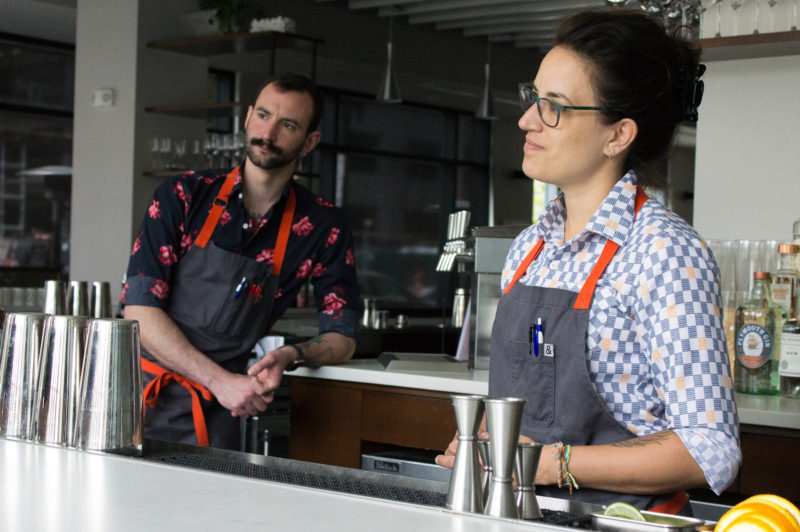
People have asked me what the hardest part of opening a restaurant has been and I have always said that it’s that everything is your first. There’s no historical context to pull from.
For example, when Jenna and I were building the spirits list, we treated it almost like we were going to be in a hotel, because we’re in this building with thousands of people living in it. We wanted to have a viewpoint, but we didn’t want to alienate people. So, we brought in all these products that we hadn’t had at other places where there was no need for them. They were craft cocktail bars, so no one was expecting us to have Jameson there. But, nobody ended up ordering them here after all. We still have some of them, but it was funny to put so much effort into that part of the process and have it be just “Oh, I guess we didn’t need that.”
This neighborhood is also being built as we speak. We can’t go off the neighbor and what they normally do, because the people coming in are still settling. The neighborhood itself is still trying to form its identity.
And we were the first. No one else was open.
So, it’s like we’re swept up into doing it with them, rather than in responding to them.
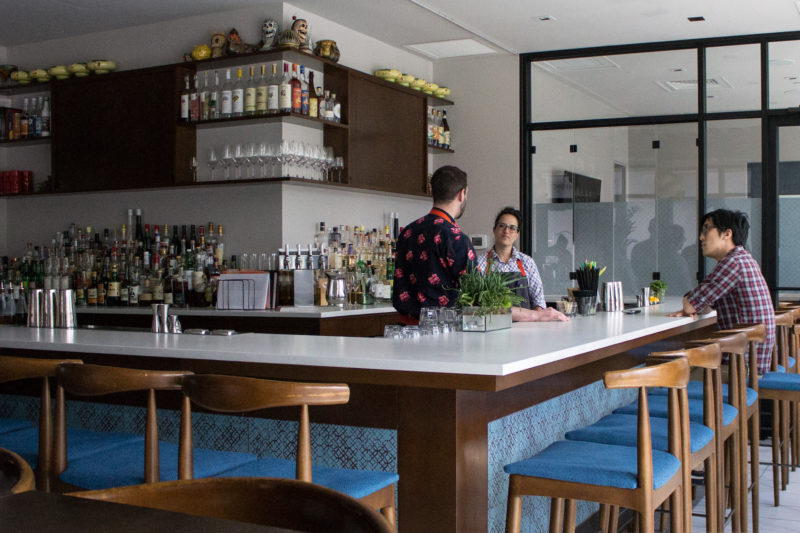
I’d like to say that we ate at every restaurant in a five mile radius and took notes on what they were doing, but that is absolutely not the case. The thing is we’ve all worked in this industry for a long time. It’s a small scene in Boston. The closest restaurant is Myers + Chang and Coppa after that. I’ve eaten at both of those places a million times.
We looked at a lot of places that were about to be opening or just opened in different cities, because it can become very insular in Boston. Here, you either learned from Jackson Cannon or John Gertsen. That’s pretty much the two big names that you see a lot. So, I always try to look outside the city as much as possible to see what other people are doing.
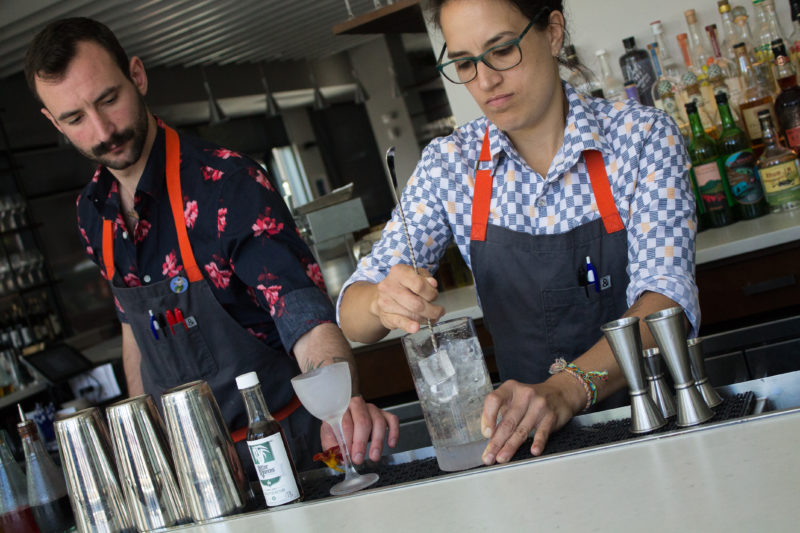
The toughest part of building out a team is that you kind of start from scratch with culture, which is really difficult. For Jenna and I, we were taking our hands from the coldest of water and putting it into the hottest of water, because we were coming from a place that’s been open for twenty years with a culture that is really strong and going to a brand new restaurant. The fact that Jenna and I had been working together for years did bring some amount of culture. At the very least, it would bring some consistency that people could see between the two of us.
I would like to say that I had some grand scheme of going to different places and finding bartenders that were great, but we had job interviews. We needed a certain amount of people who really knew how to bartend already and a certain amount of people who we thought we could teach and could learn along the way. With our reputation in this city, we had a couple great bartenders just pop out of the woodwork. We were really lucky that a mutual friend of ours, Josey Packard, decided she really wanted to come here a couple days a week. She had opened Drink and been there for a long time, so she was a great resource to have on the team.
It’s one of those things where you look for people who are going to be the right cultural fit and not just the best bartenders. As with every opening, you shed a few people along the way, but we’ve been lucky to keep most of our people. We haven’t had to hire any bartenders since we opened. We just like people who are nice.
When I first started hiring at Lineage, I was working for Jeremy Sewall, who just opened Les Sablons, and he always had a saying before we would interview people: “You can’t train nice.” It’s absolutely true. I can’t train people to be nice, but I can train anyone to make a cocktail. I can’t teach people to be how to be hospitable towards guests, to have the desire to be that way.

What is really important is to have a vision. You want to clarify it as much as you can and you want to roll with that. It gets murky if you try to do too many things. The things that really shine and stick out in the places that we know are really true to who they are and their identity. If you can keep a clear vision, it helps you make decisions along the way. People will also follow you, because they will understand what you’re trying to create.
Be a sponge. Read every book you can read. Read every cocktail list you can read. Look at every website you can look at. We live in a day and age where there is so much information available. You have to find a way to take it all in and filter it down. Like Jenna said, be clear about your own vision, because there is so much noise. There are so many different programs and so many different styles of bartending, but the successful ones have a very clear viewpoint.
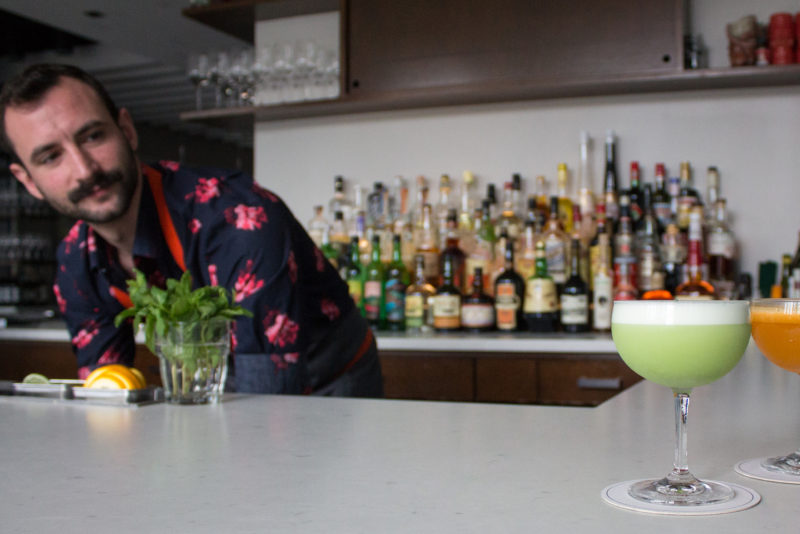
Make sure to check out some of Jenna and Ryan’s cocktail recipes at Bar Mezzana and get even more insight into how they developed them in our newest Craft Cocktail Book. For more industry spotlights and insights, stay tuned to the blog by creating your own free community account to get up-to-date notifications on new articles as well as gain access to exclusive resources.
Plus, check out the recipes here with additional photos from our private mixing session with Jenna and Ryan.
Schedule 15mins to chat with a product specialist
Start a FREE Trial Today! BevSpot offers full product education and account setup for all customers! No card Information needed!
